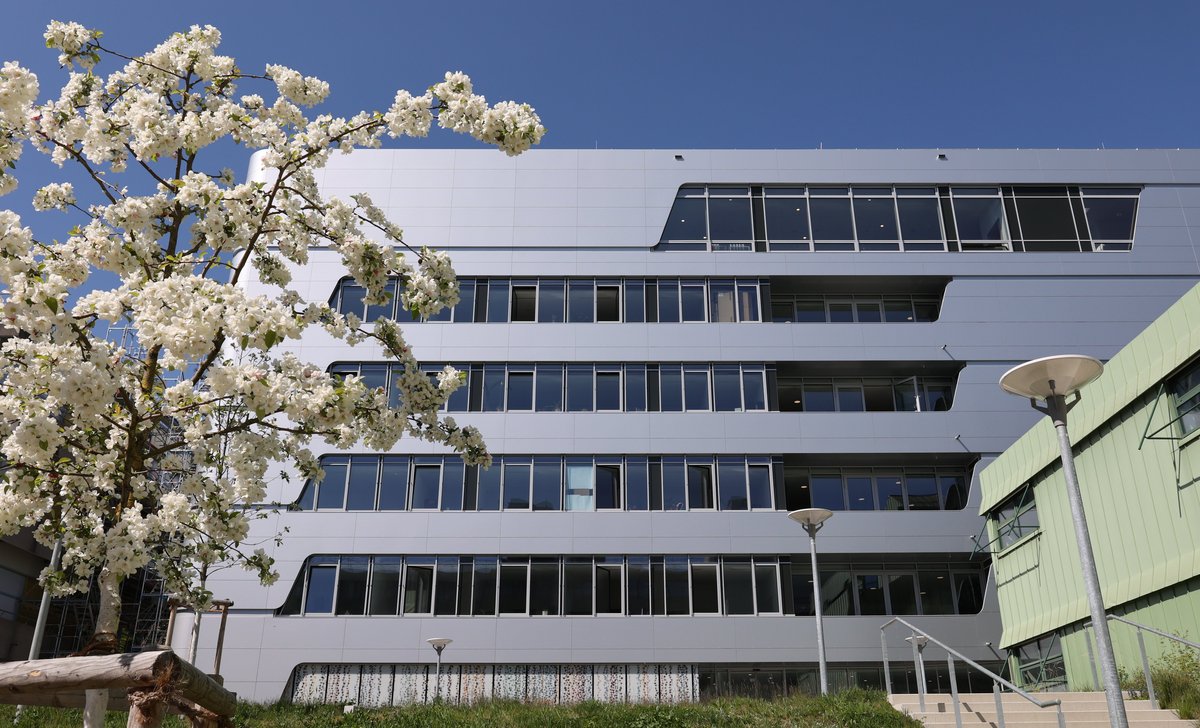
Centre for Visual Computing of Collectives (VCC)
What is the VCC?
The Centre for Visual Computing of Collectives (VCC) is an interdisciplinary research centre that focuses on animal collective behaviour and its underlying mechanisms. The 3000 square meter research building, completed in 2021 for 30 Mio. Euros, offers world-class infrastructure on 8 floors. The VCC houses cutting-edge facilities for the collection, exploration, and subsequent analysis of collective behaviour data. The interdisciplinary building accommodates 3 departments and the Centre for the Advanced Study of Collective Behaviour. Furthermore, it provides room for 7 special laboratories, which together form a unique integrated body for comprehensive collective behaviour research.
Gallery
-
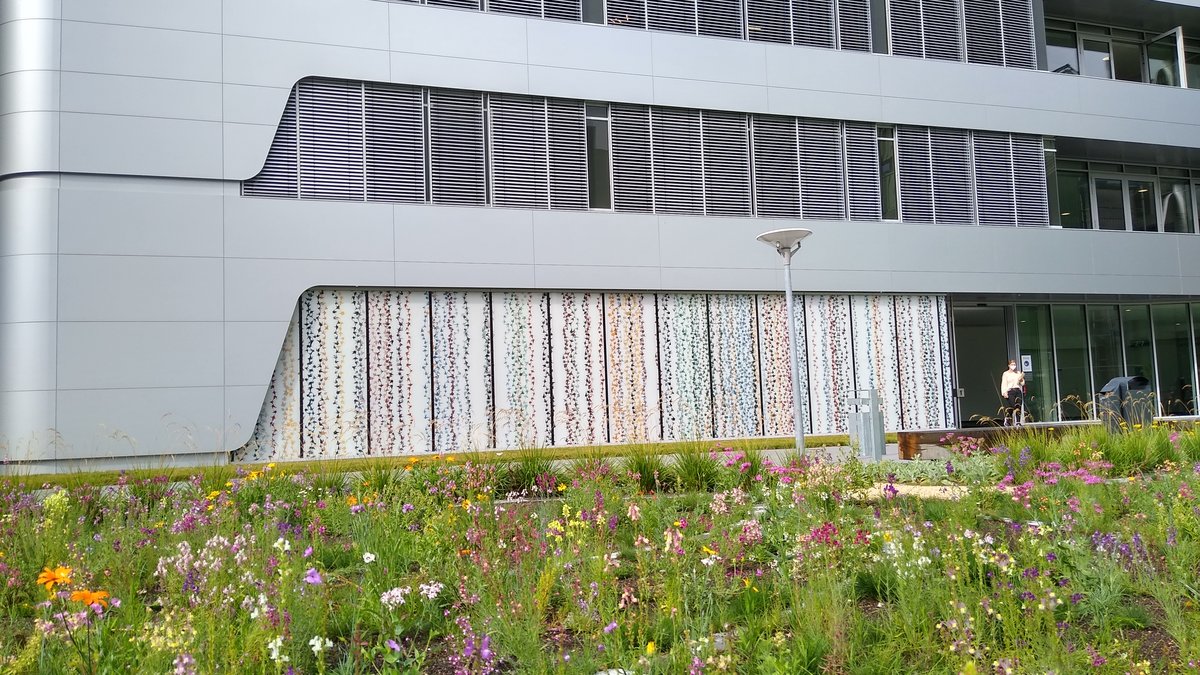
-
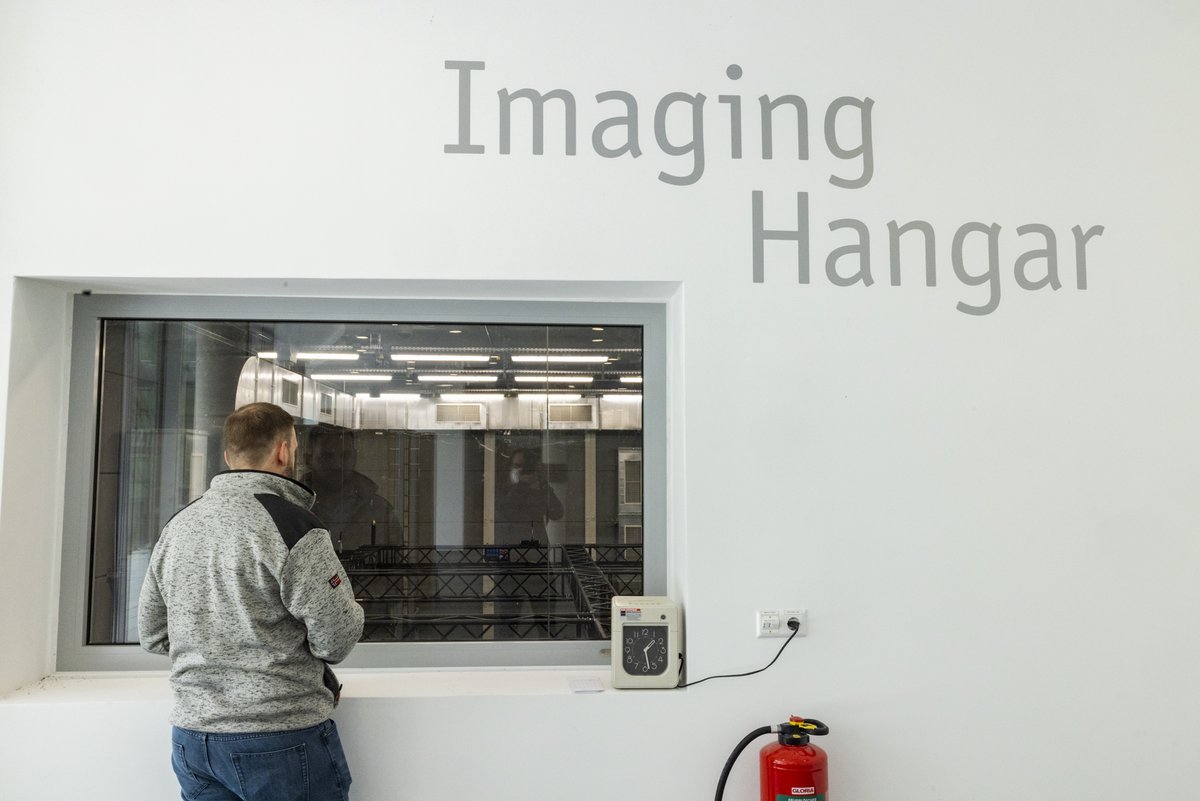
Imaging Hangar. Copyright: Max Planck Institute of Animal Behavior -
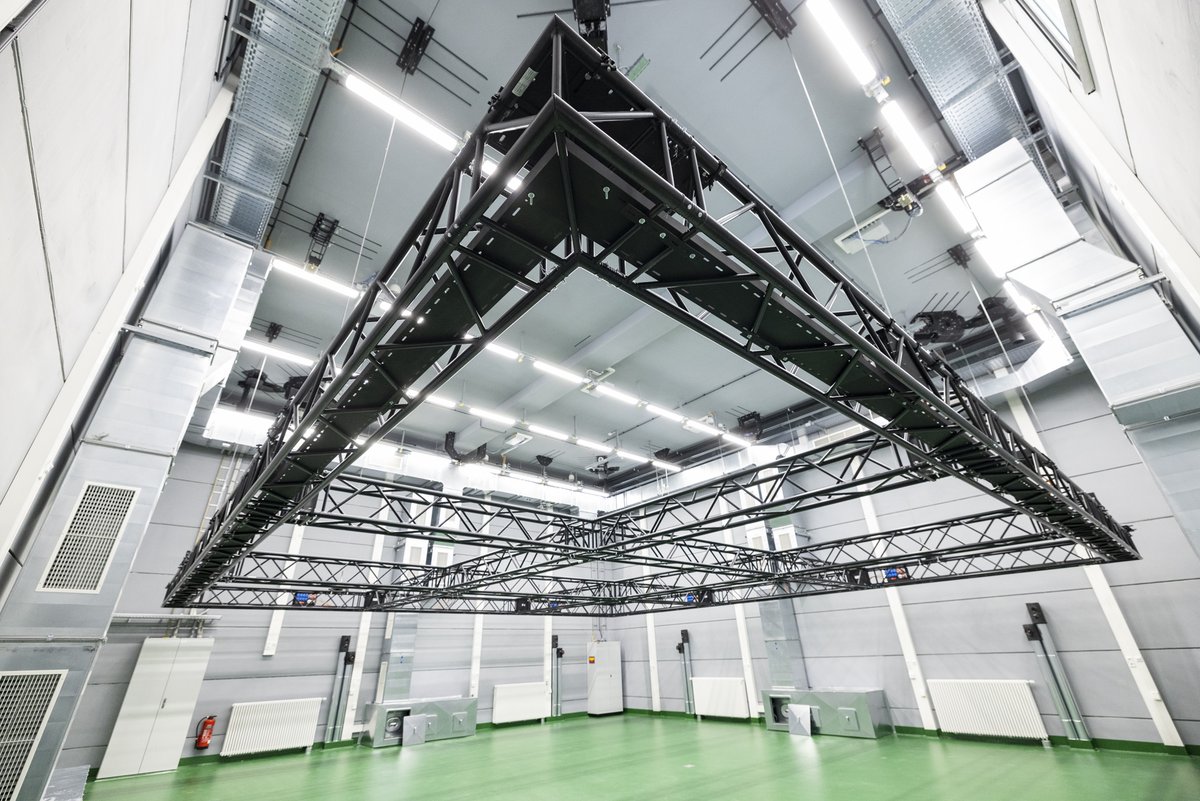
Imaging Hangar. Copyright: Max Planck Institute of Animal Behavior -
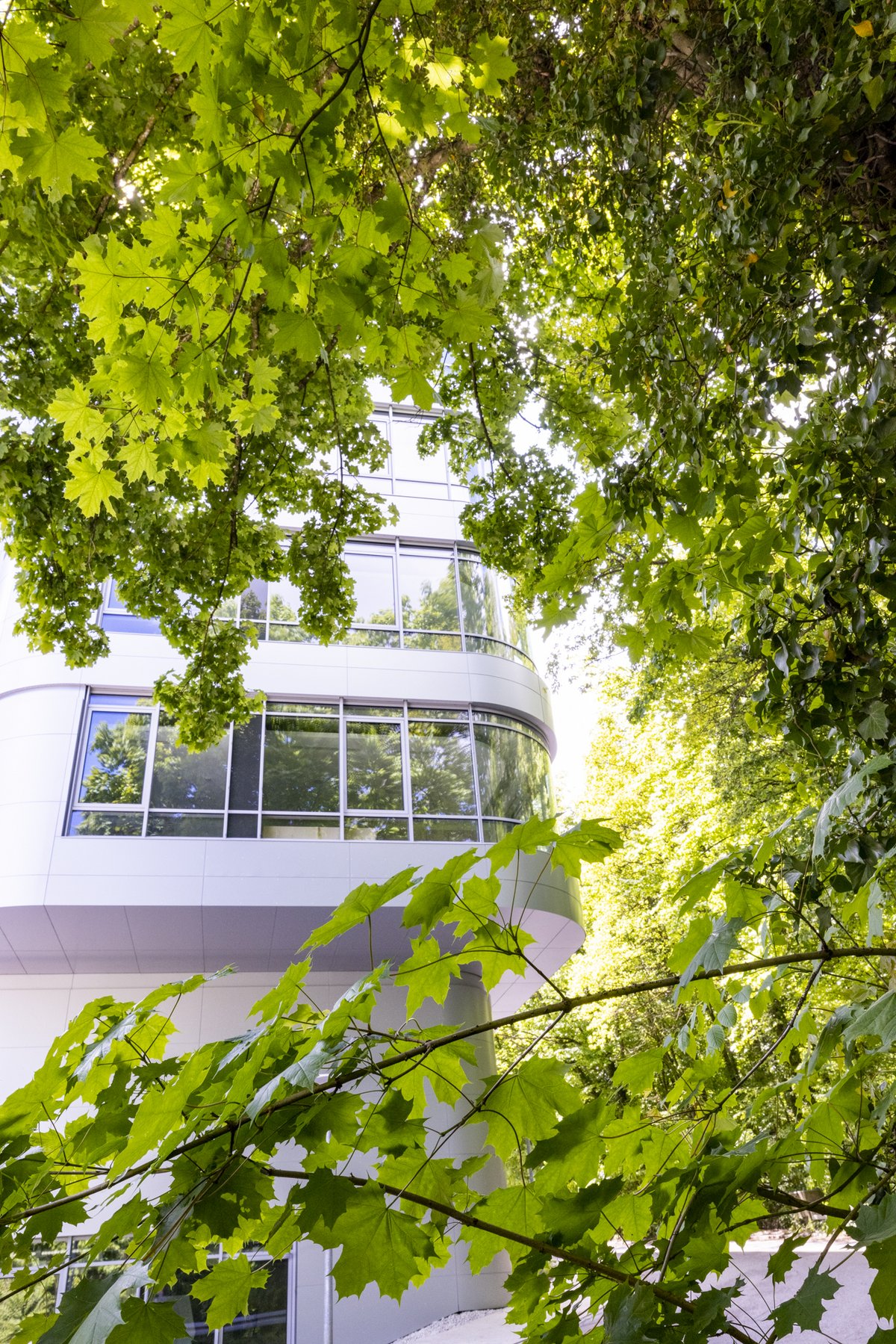
The VCC building. Copyright: Max Planck Institute of Animal Behavior -
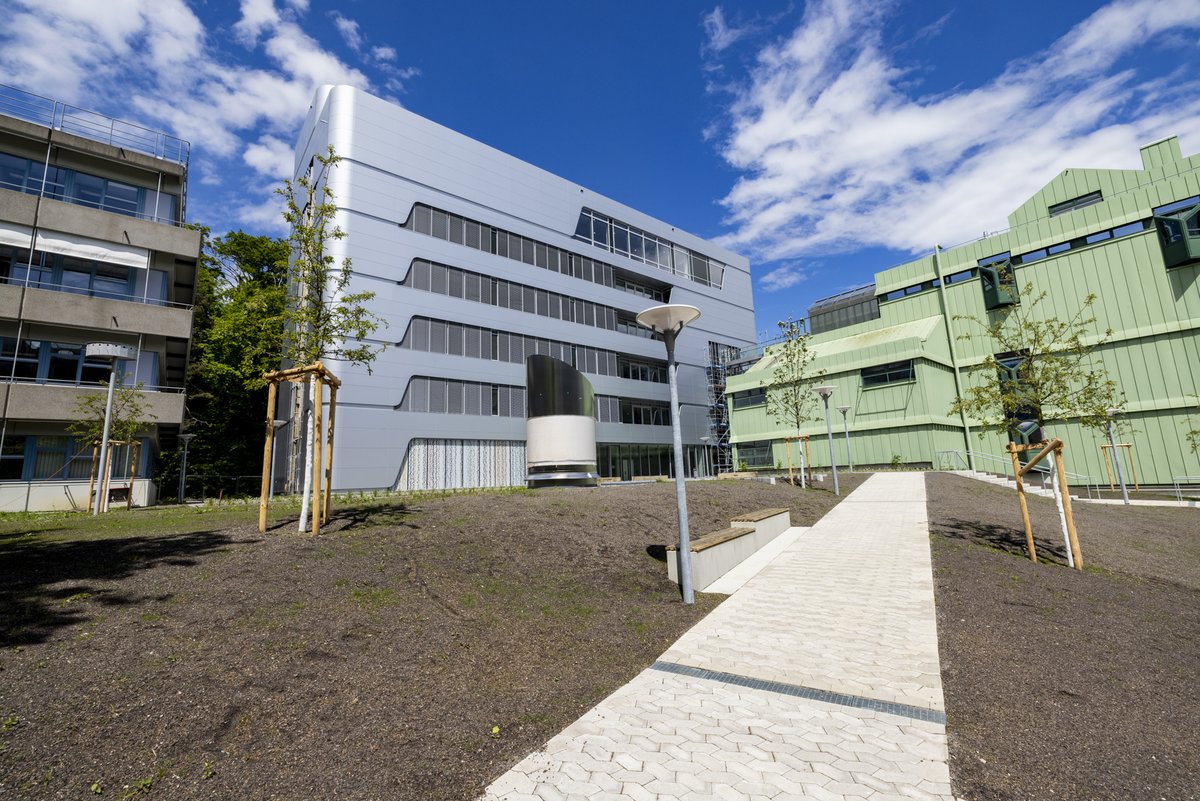
The VCC building. Copyright: Max Planck Institute of Animal Behavior -

View from the VCC. Copyright: Max Planck Institute of Animal Behavior -
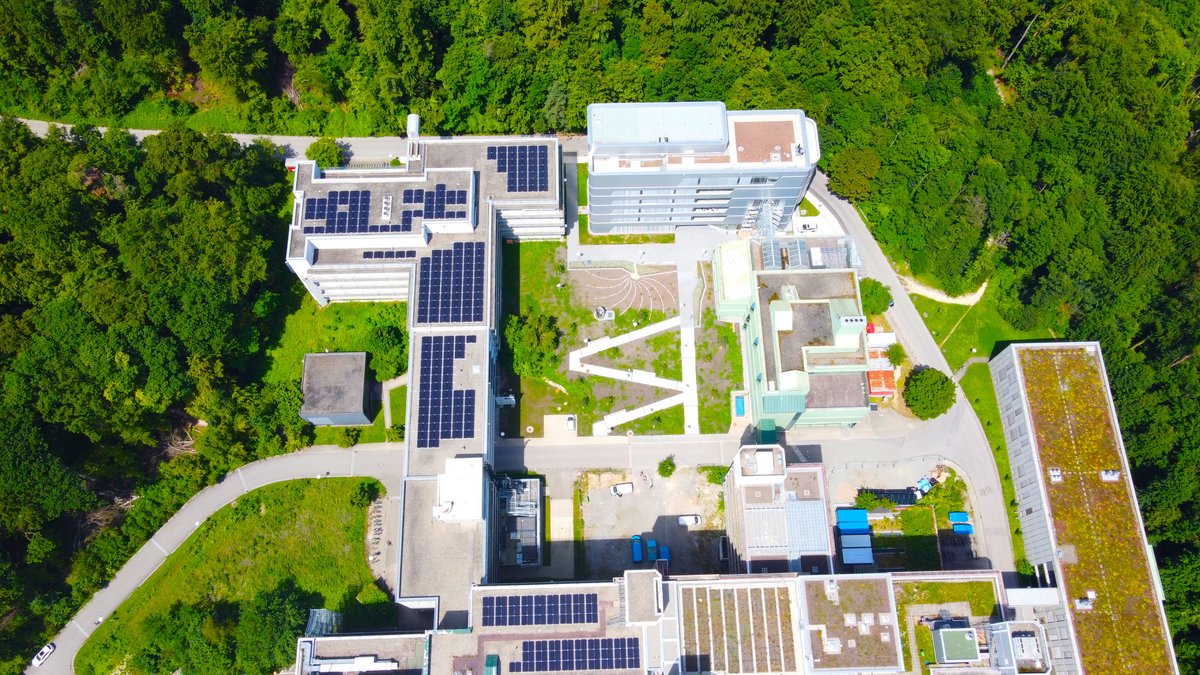
VCC from the air: Copyright: Felix Petersen -
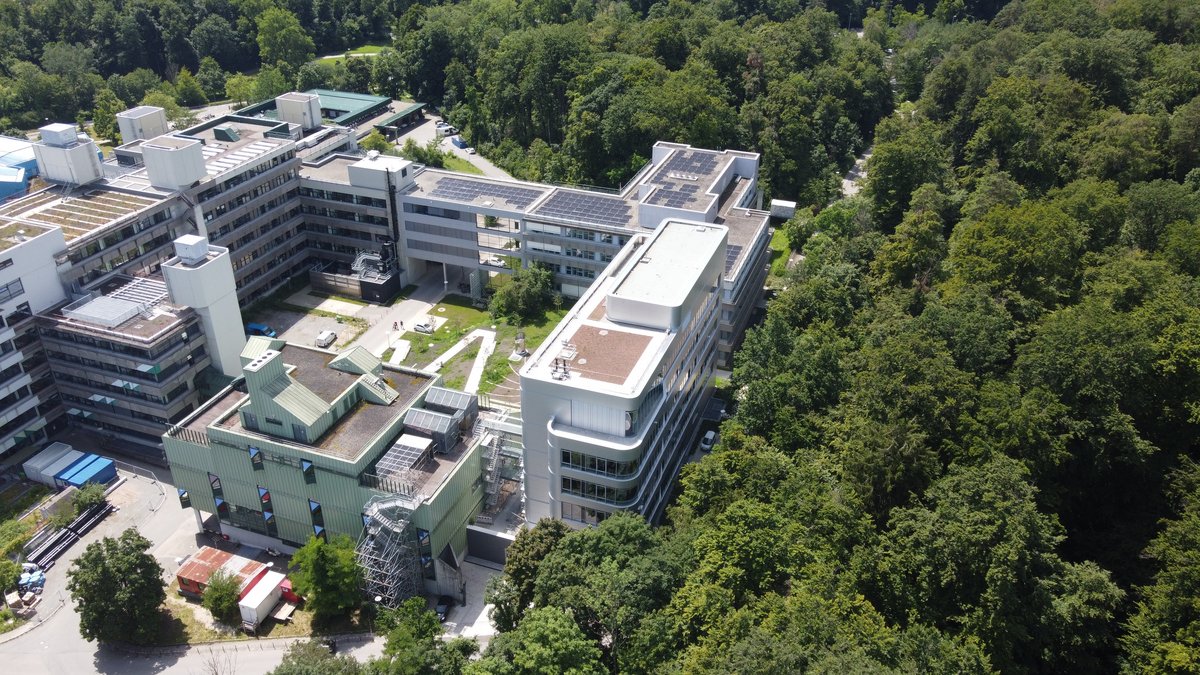
VCC from the air: Copyright: Felix Petersen
How does it work?
The VCC provides a unique combination of laboratories and infrastructure to ensure the best possible research conditions for its personnel: The Imaging Hangar, the Fish Labs and the Virtual Reality Lab provide the experimental data that will be visualized for collaborative exploration in the Data Theatre. In addition, a large observation deck on the rooftop makes it possible to conduct exterior experiments with Imaging Hangar both lab and wild animals. While the Computer Graphics Lab provides the technical solutions necessary to expose animals to and track them in virtual reality environments, research in the Network Analytics Lab and the Control Room Lab enables optimal data handling and tailored solutions on the software and interaction side. Together, the labs and the building itself form an integrated body brilliantly prepared to research collective behaviour.
Key Areas
Imaging Hangar
At the heart of the VCC building is the Imaging Hangar. The behaviour of animals is observed in a reactive, 3D environment of 1.900 cubic meters. Pioneering technology on this scale allows the study of swarming birds, insects, and mammals in controlled environments. Their reactions to virtual influences, such as projected predators, is tracked with high precision in real-time, providing a manipulable environment with natural observations. In addition to expanding the insight on animal networks, the imaging hangar contributes to the development of computer vision. With its adaptable design, new technology can be easily implemented, such as motion capture and computer vision technology.
The Imaging Hangar is an outstanding foundation for research on collective behaviour that allows scientists to study the phenomena that occur within animal groups, and further develop cutting-edge research tools.
Fish Labs
Similar experiments on a smaller scale can be conducted in the Fish Labs, where different aquatic species can be observed in full detail while being exposed to crafted virtual reality environments under precisely controlled conditions.
Computer Graphics Labs
Since no state-of-the-art technology for reactive virtual 3D environments is currently available, solutions will be researched and tested in the Computer Graphics lab. This comprises testing of high-resolution projection technology and real-time tracking devices as well as data processing needs for the real-time interplay of these components. Also, development and optimization of the virtual terrain simulations will be conducted here.
Network Analytics Lab
Tracking the animals in the Imaging Hangar and fish labs in the anticipated high level of detail generates massive amounts of data. External data sources such as tracked wild animals for example from the ICARUS project add to that amount. Thus, efficient data storage and subsequent computational processing are crucial for the scientific prowess of the VCC. These challenges are being worked on in the Network Analytics Lab, where also formal representations of the interaction networks derived from the data collected are researched.
Virtual Reality Lab
A big step in collective behaviour research is the transfer of knowledge derived from animal behaviour to the human domain or human-controlled networks such as logistics or traffic. Testing hypotheses gained from the observation of animals on humans requires the ability to expose testees to an equally controlled setting as the animals. The Virtual Reality Lab will provide this capability using different technologies enabling a fully controlled virtual 3D environment for probands. A setup of multiple Virtual Reality headsets such as the Oculus Rift for fixed-position experiments or the HTC Vive for full freedom of movement will allow experiments with several probands simultaneously in a shared virtual environment. In addition, mixed reality technologies such as the Microsoft Hololens will allow the augmentation of real and tangible experimental setups with virtual effects to confront a test person with new situations and stimuli. Compared to real-world experiments, conducting virtual and, respectively, mixed reality experiments allows for a much more controlled environment with far greater possibilities to track the actions of probands, as all actions can be recorded directly with minimal sensor uncertainty.
Control Room and Analytics Lab
In addition to creating reactive virtual environments with real-time steering and data collection, the third major task is the exploration and knowledge generation from the collected data. The majority of the datasets consists of tracked movements of collectives. Due to the complexity of the data and tasks, a combination of computational and visual analysis methods is required for an effective exploration of the data. Novel tools, visualizations, and specifically designed hardware setups will be put to test in the Control Room and Analytics Lab, where a flexible environment is provided to create and compare different solutions. Amongst others, multi-display setups, flat and wall-mounted high-resolution touchscreen assemblies, and novel interaction technologies, such as eye and motion tracking, will be available to the users.
Data Theatre
If the Imaging Hangar forms the heart of the VCC, the Data Theatre can be seen as its brain. The 160 square meters sized room is designed to bring together scientists from all involved disciplines to collaboratively explore and analyse collective behaviour data on a 7m x 3m sized ultra-high resolution projection system. Due to its exceptionally high pixel density, this exceptional setup will provide the possibility to interactively explore very large amounts of data. At the same time, the physical size of the Data Theatre display allows to coincidentally review the big picture and very small details, making it ideal for joint analyses of multiple experts or individual presentations to an audience of up to 130 people.
